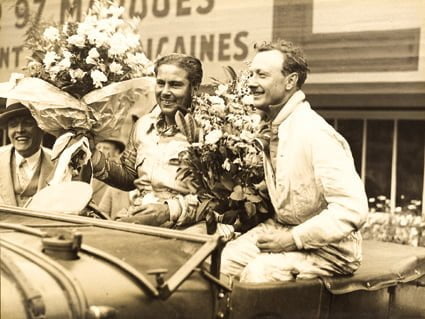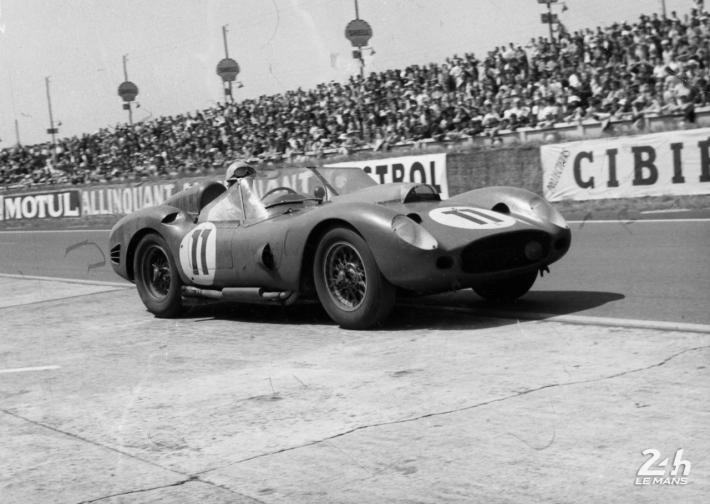Toyota Gazoo Racing are heading into the 88th running of the 24 Hours of Le Mans as firm favorites for the overall victory. Were the Japanese squad to take their third consecutive victory, they would become only the sixth team in Le Mans history to win three in a row.
Winning the 24 Hours of Le Mans once is tricky enough, let alone twice. But to win it three times on the bounce is something only a handful of teams have managed to pull off.
For the record, this is exclusively talking about teams, and not manufacturers. Were we to include manufacturers, we could also include Jaguar’s 1955-1957 streak, but that was marked by one win for the factory squad and two for the privateer Ecurie Ecosse outfit.
As a manufacturer, Porsche holds the record by a considerable margin, with seven consecutive wins between 1981 and 1987, although that was partially achieved by the privateer Joest Racing outfit.
The Bentley Boys

It is virtually impossible to tell the early history of the 24 Hours of Le Mans without mentioning Bentley and the illustrious group of wealthy aristocratic racing drivers known as the ‘Bentley Boys’.
Under the guidance of Woolf Barnato, who was the company’s chairman at the time, Bentley Motors first won the race in 1927, with Dudley Benjafield and Sammy Davis taking the win in a Bentley 3 Litre.
Barnato, an avid sportsman and racer himself, got involved in 1928 and would go on to win the race three times, each time with a different co-driver. In 1928, he and Bernard Rubin won the race in a Blower Bentley. In 1929, Barnato won again, partnering Henry Birkin in a Bentley Speed Six. The final win came in 1930, yet again in a Speed Six, partnering Glen Kidston.
By 1931, however, the writing was on the wall for Bentley. Financial troubles brought about the end of Bentley’s racing dominance, and the company was sold to Rolls-Royce. Barnato would not race at Le Mans again and it would take over seventy years before Bentley retook the Le Mans crown when the Speed 8 prototype won in 2003.
La Scuderia

The post-war era was a tumoultuous time for Le Mans. Ferrari took its maiden victory in 1949, after which Talbot Lago, Mercedes, Jaguar and Aston Martin all took victories. It was also the time period that saw the deadliest crash in its history, when the Mercedes 300SLR of Pierre Levegh flew into the crowd and killed dozens. But as the 1950s merged into the 1960s, an unstoppable force took center stage, and it came from Italy.
Between 1960 and 1964, the Scuderia took an unprecedented run of five consecutive victories before it was, ironically, beaten by its customer North American Racing Team outfit. Throughout its run, the scarlet red factory Ferraris were piloted by some of the greatest drivers the event has ever seen: Olivier Gendebien, Phil Hill, Lorenzo Bandini and Nino Vaccarella, to name but a few.
It was also during this period that one of the greatest rivalries in Le Mans histories unfolded: Ford versus Ferrari. Ford, furious after Ferrari turned down an offer to buy the company, built the GT40 to defeat Ferrari in the French endurance classic.
The GT40 first appeared at Le Mans in 1940 but it led to Ferrari’s fifth win courtesy of Jean Guichet and Nino Vaccarella. Ford lost again at hands of the NART trio of Jochen Rindt, Masten Gregory and Ed Hugus before the Italian streak was finally snapped by Ford in 1966.
Matra
After Porsche took two consecutive victories in 1970 and 1971 with the 917K, the rules were changed, with a new Group 5 category limiting engines to a three-liter capacity. With Porsche no longer present, Ferrari once again became the dominant force until, much to everyone’s surprise, the Scuderia opted not to contest the 1972 24 Hours of Le Mans.
This meant that it was now between Alfa Romeo and Matra, which concentrated on the victory and enter a total of four of their new MS670s. It paid off, as Henri Pescarolo and Graham Hill took the victory, which completed the Triple Crown for Hill, something no drivers has ever repeated.
One year later, Pescarolo and Gérard Larrousse defeated a returning Ferrari for a second victory, before the team added a third, fairly straightforward win when Alfa Romeo retired at the last minute.
Porsche takes center stage

Prior to 1981, Porsche had already captured five overall victories. Two with the 917K, followed by two with the 936 and another unexpected victory when the privateer Kremer Racing squad won with the Porsche 935 K3.
In 1981, however, Porsche had its eye on the future. With the Group C regulations set to be introduced, the German manufacturer was working on the car that would become the 956, but needed to test its engine. Its approach was surprisingly straight forward.
Porsche took its 936 chassis out of the museum and fitted it with a new, 2.6L flat-six engine with two turbochargers. In order to drive this 936/81, Porsche persuaded Jacky Ickx out of retirement. Partnered with Derek Bell, the pair took a dominant win, winning by fourteen laps.
The following year, the 956 was introduced under Group C regulations. It would prove a dominant car, with a 1-2-3 victory lead by Ickx and Bell in 1982 and another factory 1-2 courtesy of Vern Schuppan, Hurley Haywood and Al Holbert.
The unbeaten sreak for Porsche’s factory crew would likely have continued into 1984, were it not for a dispute between the manufacturer and the ACO, which led Porsche to withdraw. Joest Racing’s 956C would go on to win in 1984 and 1985. Porsche’s factory squad would win again in 1986 and 1987, but would not score a threepeat again until the LMP1 era, when the 919 Hybrid won three in a row in 2015, 2016 and 2017.
Audi dominance

There’s arguably no manufacturer more synonymous with Le Mans in the 21st century than Audi, and there is good reason for that. Between 2000 and 2014, the German manufacturer went for a near-unstoppable run of dominance. It was stopped only by Bentley in 2003 and Peugeot in 2009.
With that in mind, it should come as no surprise that Audi’s factory squad has won three Le Mans on a row multiple times. The first streak came between 2002 and 2002, when the pairing of Frank Biela, Emanuele Pirro and Tom Kristensen piloted the Audi R8 to victory on three consecutive occasions.
Its streak was then interrupted by Bentley as well as wins for customer teams Team Goh (2004) and Champion Racing (2005) before once again bagging three wins in a row between 2006 and 2008 with the diesel-powered R10 TDI. During these years, Peugeot positioned itself as Audi’s most formidable adversary and successfully toppled the Ingolstadt might in 2009.
After this defeat, Audi’s factory prototype operation embarked on its most impressive streak, winning five Le Mans in a row with the R15 and the R18 between 2010 and 2014. Audi was finally toppled in 2015 by Porsche before ending its LMP1 program at the end of 2016.
Driver glories

Aside from records for the team, the pairing of Kazuki Nakajima and Sebastien Buemi look set to join elite company of their own, should they take the chequered flag at 14:30 on Sunday.
The pair, along with ex-partner Fernando Alonso, currently sit on two consecutive victories. Should they add a third, they will join a group of just seven drivers that have taken three straight wins in the French endurance classic.
These drivers include the previously mentioned Woolf Barnato (Bentley), Olivier Gendebien (Ferrari), Henri Pescarolo (Matra), Jacky Ickx (Porsche, Mirage). The other three drivers are Audi winners Emanuele Pirro, who will serve as Grand Marshal this weekend, as well as Frank Biela and Marco Werner.
Nakajima and Buemi will have quite a long way to go in order to match the consecutive win record, however. That was set by Mr. Le Mans, Tom Kristensen.
The Dane took a record six consecutive victories with Audi and Bentley between 2000 and 2005. Add his 1997, 2008 and 2013 wins to that tally, and Kristensen becomes the most successful Le Mans racing driver of all time.










Discussion about this post